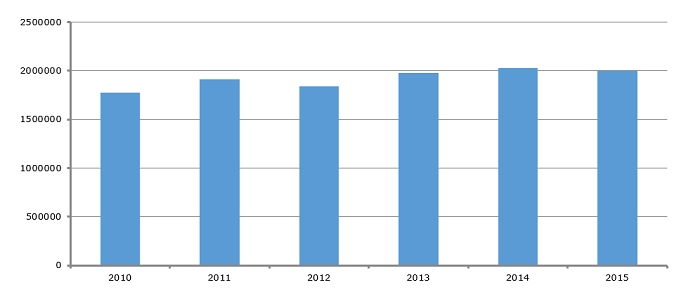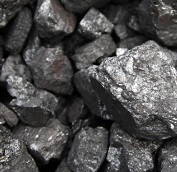Iron ores like hematite and magnetite, being one of the most abundant elements in the Earth’s crust, have laid the foundation for modern and previous civilizations through the myriad of their application in weaponry, tools, machinery, construction, transportation, to name just a few. Undoubtedly, starting from the Iron Age, the development of iron metallurgy has become an important turning point in the history of humankind and ingenuity of human thought. Meanwhile, the essential character of iron ores does not preclude them from being a commercial product highly susceptible to fluctuations of macroeconomic situation, steel demand (the global steel market is currently oversupplied), regulatory measures, modern technologies and ecological directives.
Iron ore: demand dynamics in 2010-2015, thousand tonnes (source: World Steel Association)

This demand is of course multidimensional with a strong regional dimension, among many others. For instance, the weakening of the Chinese demand for iron ores or possible imposing of tariffs on US steel imports by Donald Trump are realities of the present ferrous business. Abundance of iron ore minerals does not also diminish monopolization in the industry, both on the level of iron reserves and their mining. Corporate concentration in the iron ore industry increased in 2015, with ten major producers accounting for almost 62% of total output, while the three world biggest iron ore mining companies – Vale, BHP Billiton and Rio Tinto – increased their share of total iron ore production from 36% in 2013 to about 44% in 2015.
Innovation in iron mining is a characteristic feature of the industry. Being an innovative endeavour from the start, iron metallurgy through ages has preserved this highly technological spirit, including in the operation of contemporary iron ore mining companies. Modern technologies in the sector have their toll, as well. For example, with the development of new cost-efficient mines worldwide China had to close a number of local low-grade iron mines. Overall, the technological changes in this sector are breathtaking. For instance, Brazilian iron-mining company Vale has been developing a new mine management system, called Vale Production Management – Mining (GPV-M), which will provide numerous benefits to the operation of ore mines and company’s ferrous business in general. GPV-M is a true example of holistic, systemic and integratory approach to the whole management chain of the ferrous business, including entire iron ore mining, transportation and processing stages. The system will offer more advanced implementation of IT methods, higher level of integration with other automation systems, new data management capabilities, decrease in manual labour and friendly interface for system operators. Other companies have to follow the suit in order to be competitive.
More information on the iron ore market is available in the in-demand research report “Iron Ore: 2017 World Market Review and Forecast”.
